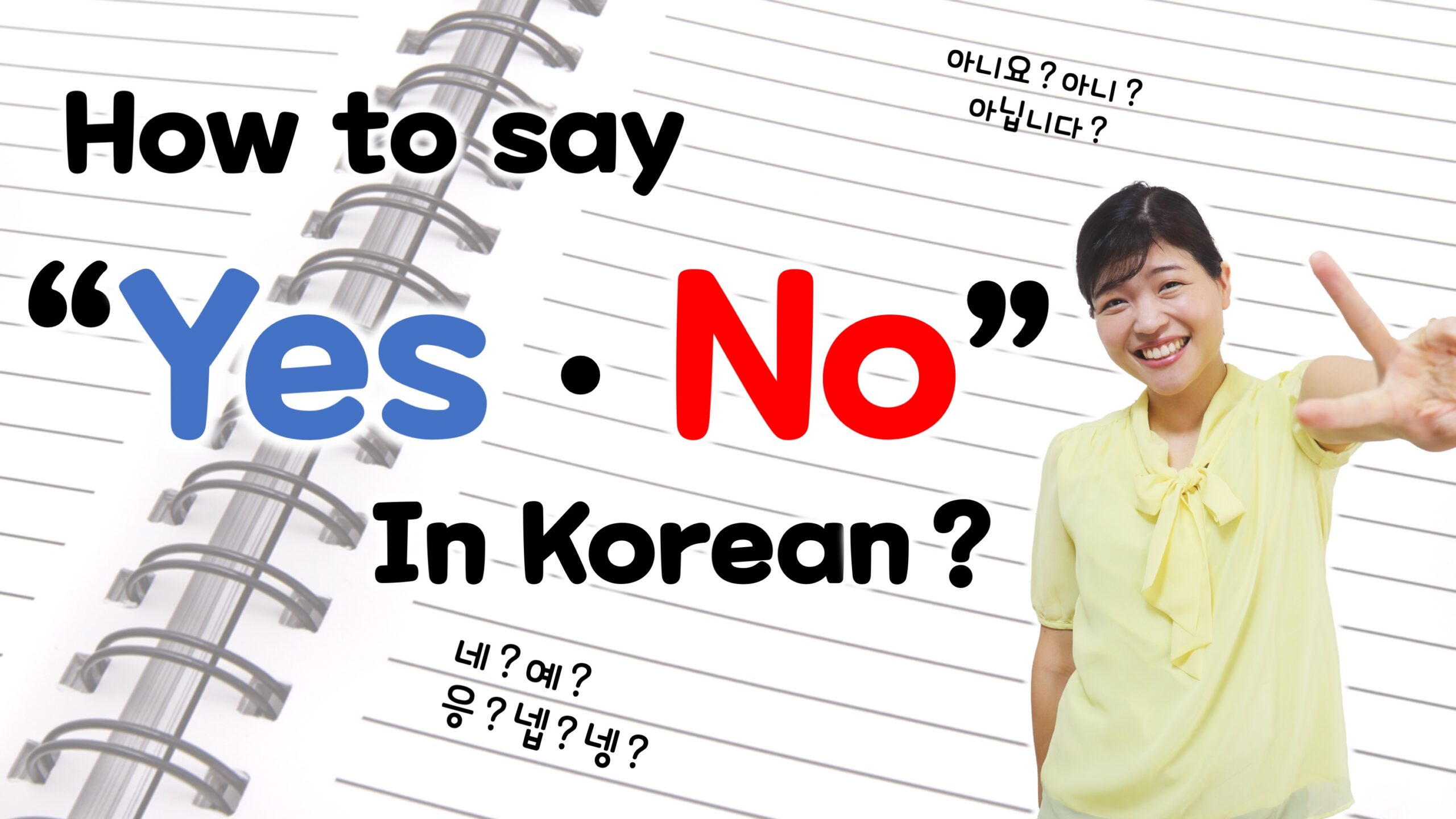Today, I’ll show you several ways to say “yes/no.”
When you go on a trip to Korea, someone may ask you a question at a supermarket or restaurant, such as, “Do you need a receipt?” “Do you have points?” “Did you understand my Korean?” and so on.
You must answer “yes/no” in Korean in these situations.
I will teach you some expressions of “yes/no” along with their nuances and politeness, such as 네, 예, 넵, 넹, 응, 아니요, and 아니.
그럼 시작할게요!
네
네 means “yes.”
This is the basic form of reply you need to remember the most.
Later in this video, I’ll introduce another polite way to say it in more frank ways.
But this is the basic way to say it to anyone.
For example, in the cafe, they will call your number such as 101 번 고객님, “customers with #101 card.”
Then you can say, 네. “Yes.”
예
This is also a polite expression of “yes.”
네 and 예 have the same meaning.
Koreans use this to superiors or in business situations where courtesy is essential.
If you are talking to a stranger, a store assistant, or even an acquaintance, I think 예 (yes) is sufficient.
For example, your boss might say
토미 씨, 내일 회사에 와요?
“Tammy, do you come to the company tomorrow?”
Then you can say 예. “Yes.”
넵
If you want to emphasize “네,” Korean people often say “넵” to show more willingness and energy.
It sounds like a military, right?
It has a ㅂ batchim under 네 (yes).
Korean people often use it when someone asks them to do something, and you reply verbally with 넵 like this.
You can also write in text messages or Kakao Talk to your close boss or manager.
For example, if your boss asks you,
어제 일찍 집에 갔어요?
“Did you go home early yesterday?”
Then you can reply, 넵! “Yes!”
넹
Young people often use this expression to express “yes.”
I am using it very often. It has a ㅇ batchim under the 네 (yes).
By adding 넹 [neng] and “n” instead of just 네 [ne], the end of the word sounds a little softer.
Korean people also use 네넹.
This creates a sound that makes the listener feel cute and charming.
You should not use this expression in official documents.
But if you are close to your boss, you can say 넹 or 네넹 to the text or chat.
I often use this word with my close business partners through Kakao Talk.
For example,
토미 씨, 이 업무 부탁해도 될까요?
“Tammy, can I ask you to do this task?”
네넹~! “Yes, yes~!”
응
응 means “yeah.”
As you can see, 응 is the frank expression of 네 “yes.”
I recommend you use 응 (yes) to your friends.
It does not have any nuance of politeness, so it is better not to use 네 (yes) for strangers or superiors.
Korean people also use 응 twice, like 응응.
Both have the same meaning.
For example, when your friend says,
점심 먹었어?
“Did you eat lunch?”
Then you can answer 응. “Yeah.”
아니요
This is the most basic form of reply you need to remember, meaning “no.”
In Korean, -요 [yo] at the end gives a polite meaning.
For example, in the cafe, the staff might ask you,
영수증 필요하세요?
“Do you need a receipt?”
You can say 아니요, “no” if you don’t need it.
아니
This is a more frank way of saying 아니요 (no).
You can use it with your friends or siblings.
This is a casual language, so it is not polite.
So it’s better to use 아니요 (no) for strangers or superiors such as a boss.
If you say “아니” to a stranger, that person may feel offended. So be careful!
For example,
혹시 내 초콜릿 먹었어?
“Did you eat my chocolate by any chance?”
아니. “No.”
How was it?
Several pairs of “yes/no” expressions depend on politeness.
However, if you can remember the basic forms, 네 (yes) / 아니요 (no), you can respond to most situations!
You can also try other expressions.
그럼 오늘도 행복 가득, 웃음 가득한 하루 되세요!
한국어 화이팅, 화이팅, 화이팅!!



